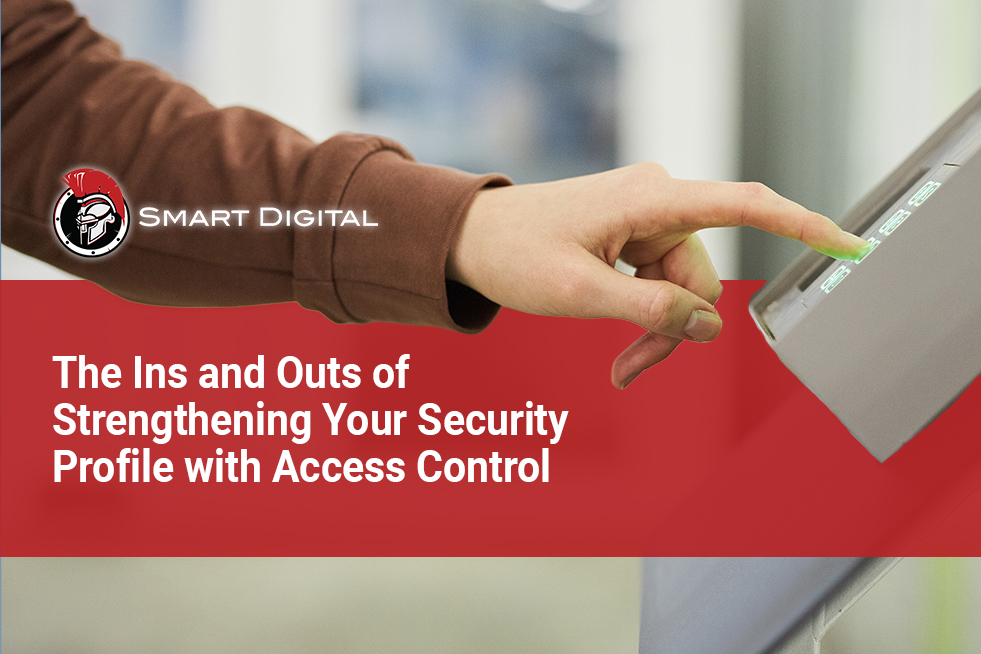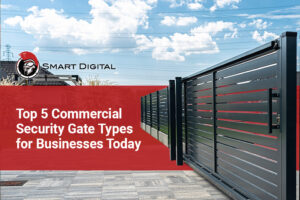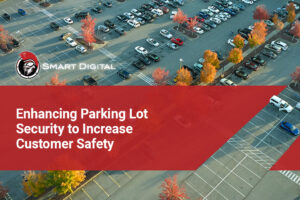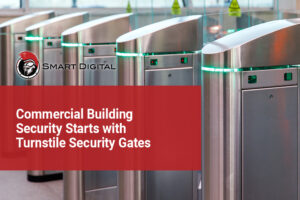Access control is a critical part of any facility’s security plan. Whether managing a commercial building, school, industrial site, or office complex, restricting and tracking who enters and exits is a core layer of risk reduction. Security breaches, data theft, equipment tampering, and property loss often stem from unauthorized access, and businesses must adopt smarter ways to prevent these events before they occur.
Modern access control systems are no longer optional. They are an expected component of any security management program, helping companies control risk exposure, manage credentials, and monitor movements in real-time. Systems like the ones designed by SmartDigital deliver both physical protection and digital oversight, giving decision-makers better visibility and control across their properties.
The Role of Access Control in Security Management
Access control acts as the gatekeeper of a facility. Its core function is to regulate who is allowed to enter specific areas, at what times, and under what circumstances. These permissions are set using credentials such as key cards, PIN codes, biometric data, or mobile apps. Depending on the configuration, the system can limit access to restricted zones, lock down areas during emergencies, and generate logs for audits or investigations.
When paired with surveillance and alarm systems, access control enhances situational awareness. Security teams can track patterns, flag anomalies, and quickly respond to breaches. Whether it’s an unauthorized door forced open or a card used outside scheduled hours, these alerts support proactive responses.
Common Types of Access Control Technologies
Access control technologies come in various forms, each designed to match the security demands of different environments. The following are widely adopted solutions that support reliable entry management across commercial and industrial facilities:
- Key Cards and Fobs: A widely used option that provides controlled entry with programmed cards or proximity fobs.
- RFID Systems: Radio-frequency identification systems that allow hands-free access through enabled credentials.
- Biometric Authentication: Facial recognition, fingerprint scans, or iris scans for high-security areas.
- Mobile Credentials: Smartphone-based apps that allow users to unlock doors securely without physical cards.
- Cloud-Based Management: Centralized control from any device with internet access, often used by multi-site businesses.
Industries That Rely on Access Control Systems
From safeguarding intellectual property to ensuring employee and visitor safety, access control systems are used across many industries to meet both operational and compliance demands. These systems help organizations maintain secure boundaries, enforce access policies, and support the overall security management strategy.
Assigning access permissions based on specific roles and responsibilities helps reduce the risk of both internal breaches and external threats. Below are some common sectors where access control plays a vital role in daily operations:
| Industry | Use Case |
| Education | Secure staff-only areas, manage building access during school hours, and prevent unauthorized entry. |
| Healthcare | Restrict access to medical storage, patient records, and sensitive zones like labs or surgery rooms. |
| Industrial & Manufacturing | Protect critical machinery, storage facilities, and restricted production zones. |
| Retail | Limit employee access to inventory rooms, offices, and point-of-sale systems. |
| Logistics & Transportation | Control access to freight yards, loading bays, dispatch offices, and fuel depots. |
Why Businesses Are Prioritizing Access Control
Security risks continue to evolve, and organizations are shifting toward proactive solutions that offer greater control and accountability. Access control systems are becoming a standard part of modern security management because they support real-time protection, simplify administration, and help reduce human error. The benefits go beyond physical security and extend to operational efficiency and compliance support.
Below are key reasons companies are increasingly relying on access control to strengthen their overall security posture:
- Improved Incident Prevention: Unauthorized access is stopped before it happens through verified credentials.
- Credential Management: Lost keys and uncontrolled badge access become a thing of the past with easy credential deactivation or reassignment.
- Audit Trails: Every access event is recorded, supporting compliance, investigations, and operational reviews.
- Scalable Configurations: From single doors to multi-building campuses, access control systems adapt to growing needs.
- Remote Monitoring: Security teams can monitor and manage doors from any location using connected systems.
Integrating Access Control with Other Security Solutions
Access control is most effective when integrated into a broader security framework. Combining it with video surveillance, alarm systems, and intercoms allows seamless coordination during incidents. For example, when a door is forced open, nearby cameras can automatically begin recording and notify on-site personnel.
Facility security solutions are increasingly built around centralized platforms. These integrated systems allow property managers to control every layer of security from one interface. Alerts, visitor logs, video feeds, and access reports can all be accessed in one place, increasing efficiency and reducing human error.
Choosing the Right System for Your Facility
Selecting the right access control solution depends on several factors. Businesses must consider site layout, the number of employees, visitor management needs, and integration with existing systems. Here are a few points to consider:
- Number of access points that need to be secured.
- Hours of operation and employee shift schedules.
- Existing surveillance or alarm systems.
- IT infrastructure for cloud-based or on-premise deployment.
- Industry compliance requirements.
Scalability is another key factor. Startups may begin with two doors and grow into a multi-location enterprise. Choosing a flexible system avoids costly replacements or fragmented tools later on.
The Future of Access Control and Security Management
Security technology continues to evolve. Access control systems are now moving beyond simple door management into data-rich platforms. Artificial intelligence, predictive analytics, and machine learning are being used to detect unusual behavior patterns, generate risk scores, and automate decisions.
Cloud-based access control offers real-time updates, automatic credential revocation, and software integrations. For companies with remote teams or flexible workspaces, this level of control is becoming the norm.
In addition, mobile credentials are expected to replace physical cards entirely in the next decade. They offer greater convenience, faster provisioning, and higher security through two-factor authentication.
SmartDigital Helps Protect What Matters
SmartDigital supports organizations across Northern Ohio with commercial-grade access control and security solutions. As a veteran-owned, service-disabled small business, SmartDigital brings field-tested expertise to every project. From entry-level systems to enterprise-grade integrations, the company delivers results-focused installations tailored to each facility’s needs.
Clients include schools, construction firms, trucking companies, and office complexes, each benefiting from flexible access solutions such as RFID, facial recognition, key card systems, and secure access gates. SmartDigital’s UL-certified technicians ensure every installation meets rigorous standards for quality and safety.
Effective security begins with knowing who has access, when, and where. With the right access control system in place, businesses gain the confidence to operate without constant oversight or vulnerability.
Let SmartDigital help you protect your people, property, and operations with customized access control systems built to perform.
Request a free quote today and discover how SmartDigital can strengthen your security strategy with practical, scalable solutions.










